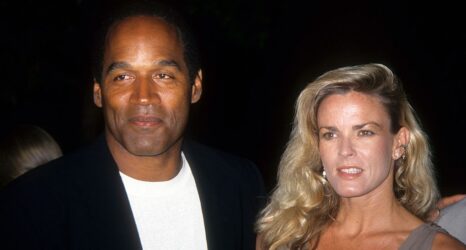Today in New York, a grand jury voted not to indict white police officer Daniel Pantaleo in the death of Eric Garner, a black man who died after Pantaleo placed him in a chokehold (a tactic that’s banned by the NYPD). The decision comes less than two weeks after a Missouri grand jury made the same decision about Ferguson police officer Darren Wilson, who shot and killed black teenager Michael Brown in August. Said Eleanor Smeal, president of the Feminist Majority Foundation (and publisher of Ms.) after the Brown verdict came down:
If Brown, who was an unarmed black teenager, can’t get justice when the entire world is watching, how can any other black person expect to receive justice if shot by a white police officer?
While today’s verdict does little to restore faith in the justice system, President Obama did respond swiftly to the Brown decision, and he may do the same in Garner’s case. Earlier this week, the White House requested $263 million to fund a police training program and purchase 50,000 body cameras—there are more than 750,000 police officers in the U.S.—that supporters say could increase law enforcement accountability. Congress must now approve the measure. Said Anne T. McKenna, an electronic surveillance expert,
If we had a body camera in that situation [in Ferguson], think how different it would be now. This debate over what the officer said happened and whether the man had his hands up, we wouldn’t be talking about it.
In Garner’s case, however, there was footage of the incident (not from body cameras, but taped by bystanders)—indeed, Garner’s suffocated cries of “I can’t breathe” were caught on camera—and still the officer involved in his death faces no criminal charges. (Garner was suspected of selling loose cigarettes, prompting his fatal clash with the NYPD).
Nonetheless, outfitting police with body cameras may potentially change law enforcement culture in the U.S.; another step would be to demilitarize local police forces. After Brown was killed in Ferguson, police employed paramilitary tactics to contain protestors—such as using sonic blasters on crowds and rolling through town in armored vehicles—and donned military-style gear, including ballistic helmets and body armor. Responding to continuing uproar over these paramilitary-style tactics, Obama took action on the issue of militarization this week, calling for better rules governing what types of military equipment can be given or sold to local law enforcement.
Currently, local police forces can get weaponry and other goods from the Department of Defense under the federal government’s 1033 program. Explains Kara Dansky, senior counsel with the American Civil Liberties Union,
Back in the 1990s, Congress authorized the Defense Department to give police departments weaponry directly out of its arsenal, free of charge.
Police forces have to pay for maintenance and transportation of the goods, but that’s all, meaning equipment coming back from Iraq and Afghanistan can quite easily end up in communities like Ferguson. “When the police engage in unnecessary paramilitary tactics, they escalate the risk of violence,” said Dansky. “It puts people at risk. … When we see the police refer to people as ‘animals,’ that’s extremely dangerous, and that’s reflective of a culture in policing that encourages the police to view the people that they’re supposed to be protecting and serving as wartime enemies.”
Outcry over the Garner decision will undoubtedly continue, adding fuel to the fire of frustration that was lit in Ferguson. Let’s hope this latest case is used as another opportunity to demilitarize local police forces and hold law enforcement to account.
Get Ms. in your inbox! Click here to sign up for the Ms. newsletter.
Photo courtesy of Flickr user Shawn Semmler licensed under Creative Commons 2.0





